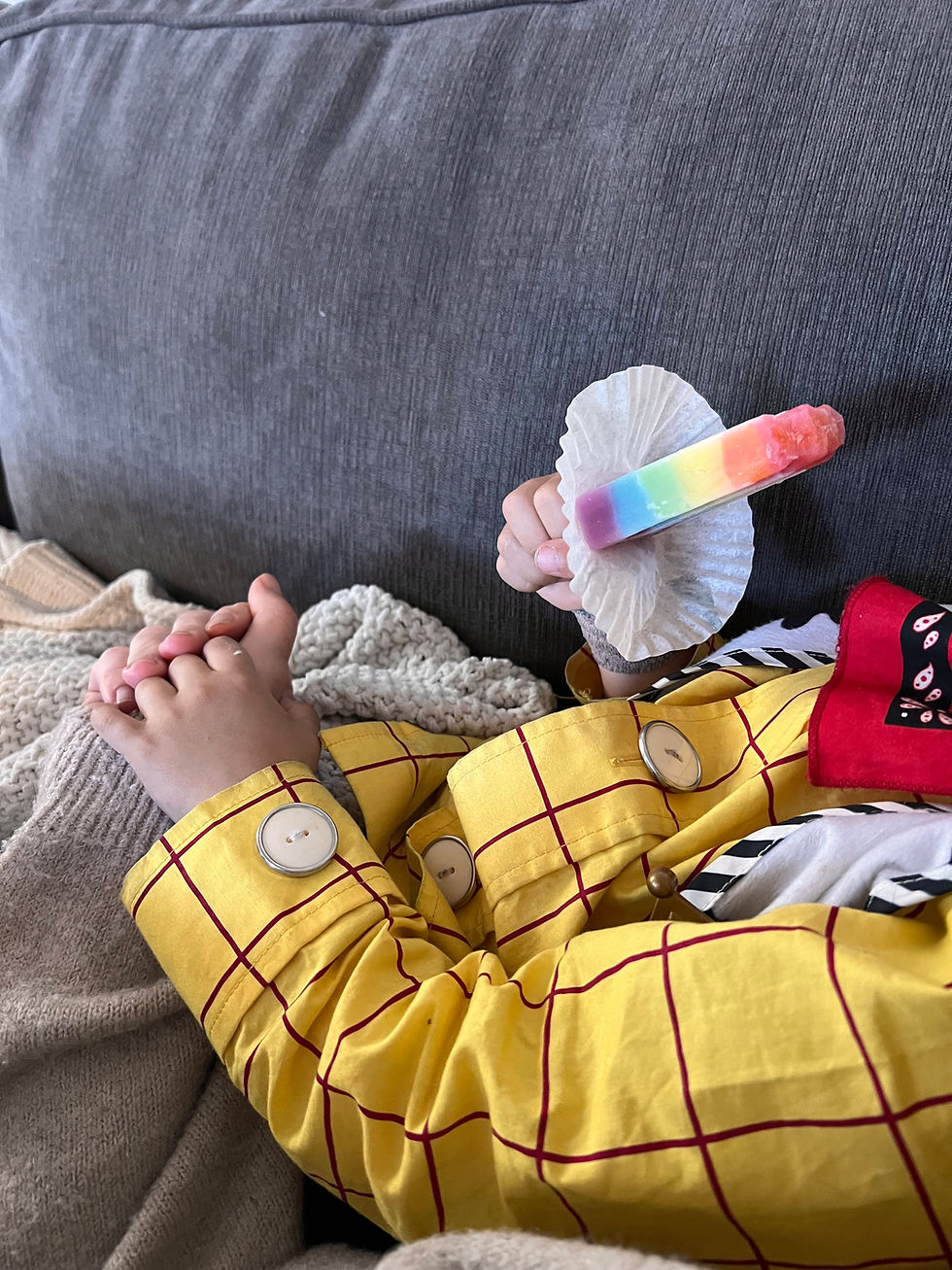From “Wait and See” to “Move and Support”: Why Early Action Matters for Your Child’s Speech
- Danielle Giarratano

- Oct 20
- 3 min read

Because waiting doesn’t grow skills — connection does.
Hey there, friends 💛
If you’ve ever heard, “Don’t worry...they’ll talk when they’re ready,” you’re not alone. It’s one of the most common phrases I hear from parents in my therapy room and honestly, I’ve heard it in mom circles, too.
As both a speech-language pathologist and a toddler mom, I completely understand how comforting that advice can sound. We all want to believe our kids will “catch up on their own.” And sometimes, they do. But other times, that “wait and see” approach can mean missing the window where small, simple support could make a big difference.
From My Heart as a Mom
I’ll be honest with you, I even heard those same words about my own child, and I wish I’d listened to my gut sooner. Deep down, I knew something more was going on, but it felt easier to wait and hope it would resolve. Looking back, I realize that following my instincts earlier wouldn’t have hurt — it only would’ve helped.
Let’s unpack what that really means — and why I’m so passionate about turning “wait and see” into “move and support.”
“I Don’t Want to Overreact…”
I get it. As parents, we’re constantly trying to figure out what’s “normal." Maybe your toddler isn’t using many words yet. Maybe they get frustrated when trying to communicate. Maybe you’ve even brought it up to your pediatrician and were told, “Give it time.”
It’s hard not to wonder if you’re worrying too much. You don’t want to label your child or start therapy “too soon.”
But here’s the truth...there’s no harm in checking in early. None. You’re not labeling. You’re learning.
What Waiting Can Mean
When we “wait and see,” our children keep doing what’s familiar — not necessarily what helps them grow.
That means fewer chances to practice new sounds, build vocabulary, or learn the back-and-forth rhythm of communication. And if frustration grows? We might start seeing more meltdowns or withdrawal. Not because they “won’t talk,” but because they can’t yet express what they need.
Every month in early childhood is a month of massive brain growth. That’s why early support is so powerful. We’re working with that development, not after it.

The “Move and Support” Mindset
The Move and Support Movement is about empowering parents to take action now — with gentle, realistic steps that nurture communication through everyday moments.
It’s not about rushing milestones or turning playtime into homework. It’s about noticing, responding, and engaging intentionally, whether your child says two words or two hundred.
Here’s how you can start:
Notice your child’s communication attempts — words, gestures, looks, or sounds.
Respond with warmth and expansion: if they say “ball,” you say, “Yes! Big red ball!” Engage in daily routines: narrate what you’re doing, pause for them to respond, and follow their lead.
These small actions build confidence, connection, and communication, all while helping your child feel heard and capable.
A Gentle Reminder
You don’t need to “wait and see.” You can move and support today, right where you are, with the tools you already have.
If your gut tells you something feels off, trust it. Early support is never a mistake — it’s an investment in your child’s future confidence and connection.

Ready to Move and Support?
If this message resonated with you, I’d love to invite you to join our First Words to Forever: Parent Connection Hub — a space for parents just like you who are ready to learn, grow, and cheer each other on.
Inside, you’ll find tips, tools, and encouragement to help your child’s language bloom through everyday moments.
Let’s move from “wait and see” to “move and support” — together. 💛
XOXO, Danielle
Speech-Language Pathologist & Toddler Mom







Comments